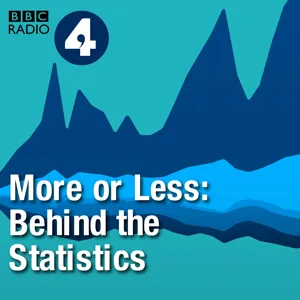Podcast Summary
Microplastics consumption: The claim of consuming a credit card's worth of microplastics weekly is an approximation, and actual consumption varies greatly depending on individual diet and habits, with more research needed on potential health risks.
The claim that humans consume a credit card's worth of microplastics every week has gone viral, but it's important to note that this figure is an estimation based on research. The World Wildlife Fund commissioned a study from the University of Newcastle in Australia, which found data on microplastics in various food and drink items. However, the exact amount of microplastics consumed can vary greatly depending on individual diet and habits. While some studies suggest a link between microplastics and health issues, more research is needed to fully understand the risks. The claim is effective in raising awareness about microplastics, but it's important to remember that it's an approximation and not an exact measurement.
Misrepresentation of microplastics consumption: Media outlets exaggerated the figure of 5.5 grams of microplastics consumed per week, which is an inaccurate estimate. The actual consumption range is much smaller, between 0.1 and 5.5 grams, with an average of 2.8 milligrams. Future research should focus on more precise measurements to understand the true impact on human health.
The commonly reported figure of 5.5 grams of microplastics consumed per week is an exaggeration. This number was derived from a research study that aimed to provide a rough estimate but was simplified and sensationalized by media outlets. The actual range of microplastics consumption is much smaller, between 0.1 and 5.5 grams, with the average particle mass being around 2.8 milligrams. However, the researchers made assumptions and applied data from ocean microplastics to microplastics in drinking water without considering the differences in particle sizes and distributions. This led to an inaccurate comparison and a misleading headline. It's important to remember that microplastics come in various sizes, shapes, and weights, and future research should focus on more precise measurements to better understand the true impact on human health.
Microplastics intake estimation: Recent analysis challenges the assumption that all microplastics consumed are small, potentially leading to overestimation of weekly intake.
The study estimating the weekly intake of microplastics through food and water may have overestimated the amount due to incorrect assumptions about the size and weight of microplastic particles. The study, which found that people consume an average of 2.8 milligrams of microplastics daily, focused on particles smaller than one millimeter. However, recent analysis suggests that a significant portion of the microplastics consumed may be larger than 1 millimeter, leading to inflated estimates when the weight of larger particles is applied to smaller ones. While the error may not matter much for a single particle, the accumulation of errors from thousands of particles consumed weekly can result in a substantial overestimation. A more accurate ballpark for weekly microplastic intake remains to be determined.
Size and composition of microplastics: Research is shifting from total microplastic consumption to the size and potential health implications of nanoplastics, which have the potential to enter the bloodstream and impact major organs
The consumption of microplastics through food and water is a topic of ongoing research and debate, with estimates varying greatly. While some studies suggest weekly consumption in the microgram range, others indicate much smaller amounts. The focus of research is shifting from the total amount consumed to the size and potential health implications of microplastics. Smaller microplastics, known as nanoplastics, have the potential to enter the bloodstream and impact major organs. Research is needed to understand where these microplastics are getting stuck in the body and the potential health consequences when they break down. Therefore, the size and composition of microplastics, rather than just the total amount consumed, should be the focus of future research.
Data Analysis Importance: Over 2.5 quintillion bytes of data are generated daily, emphasizing the importance of data analysis and interpretation for improved decision-making, efficiency, and new opportunities. Staying curious and open to new information is crucial for uncovering insights.
During the discussion, Jamie Woodward from the University of Manchester in the UK and Yuval Rosenberg, a self-declared loyal listener, brought up an interesting statistic. They mentioned that it's estimated that over 2.5 quintillion bytes of data are generated every day. This is a staggering amount of information, and it highlights the importance of data analysis and interpretation in today's world. This statistic underscores the significance of being able to make sense of the vast amounts of data that are available to us. It also emphasizes the need for effective data management and analysis tools. The ability to extract insights from data can lead to improved decision-making, increased efficiency, and new opportunities. Moreover, this discussion also emphasized the importance of staying curious and being open to new information. Whether it's a statistic you've come across or a new idea, it's essential to take the time to explore it further. You never know what insights you might uncover or what new perspectives you might gain. So, in summary, the discussion underscored the importance of data analysis and interpretation in today's world, emphasized the significance of staying curious and being open to new information, and highlighted the staggering amount of data that is generated every day.
